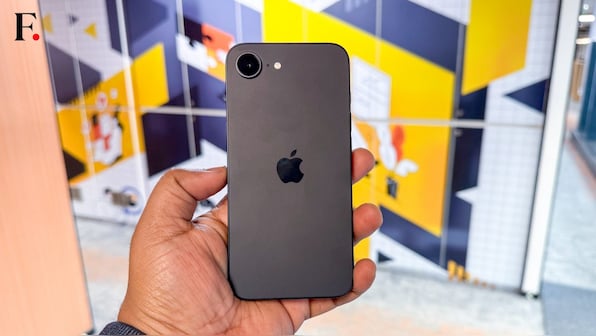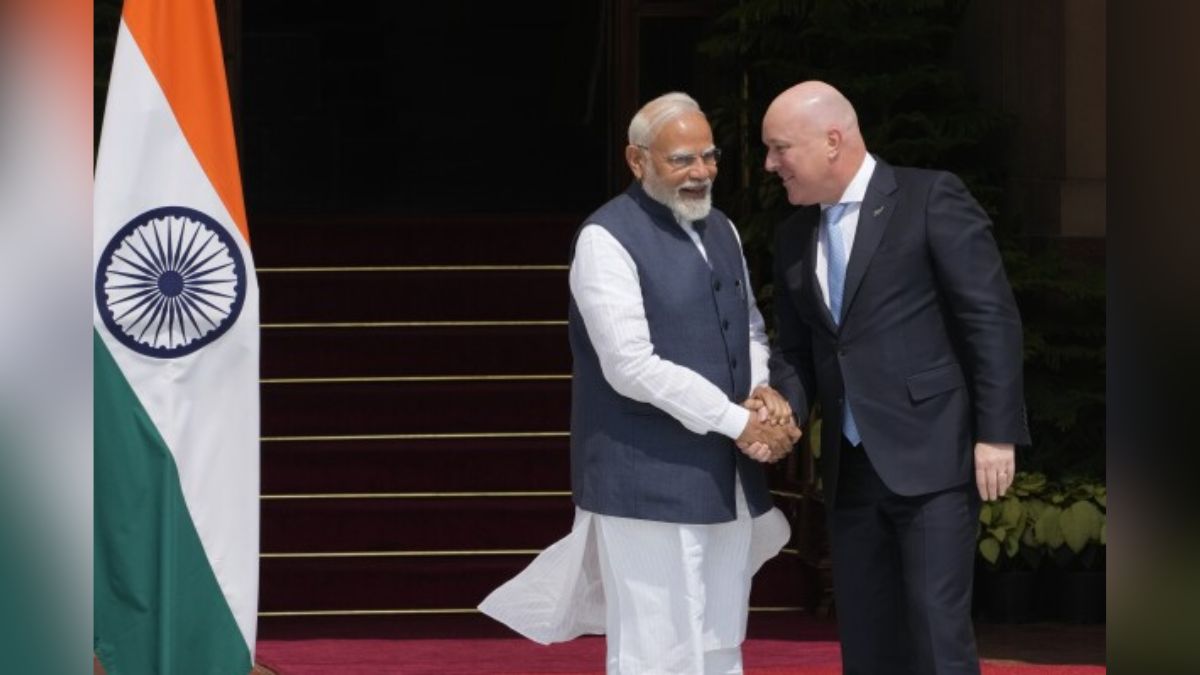The iPhone 16e is finally available in India, and for first impressions, it certainly looks and feels like a proper member of the iPhone 16 family. However, it’s hard to ignore some the places where Apple has cut corners. The retro-style notch, chunky bezels, and single 48MP camera make it feel a little outdated, especially when there are budget phones with bigger screens and multiple cameras. But then, this is the cheapest, latest-gen iPhone that you can buy today.
That said, it’s still an iPhone, and that means access to Apple Intelligence, and more importantly, Apple’s seamless ecosystem, If you already own a Mac, iPad, or Apple Watch, you’ll appreciate how effortlessly everything syncs up — your messages, photos, and apps just work across devices. That’s something Android phones, no matter how feature-packed, still struggle to match.
The Super Retina XDR display is impressive if you can overlook the notch and don’t care about missing Dynamic Island. The 48MP Fusion camera takes great photos and videos, but Apple’s 2x zoom claim is a bit misleading — it’s just a cropped 12MP section of the main sensor, not a real telephoto lens.
If you want an iPhone on a budget, the 16e does a great job, especially if you’re looking at Apple Intelligence — the iPhone 16e is the most affordable device to support Apple’s take on AI. But if Apple Intelligence is something that doesn’t pique your interest, things start changing, quick.
Apple iPhone 16e First Impressions: Design
At first glance, the iPhone 16e fits right into the iPhone 16 lineup. With the screen off, it’s nearly identical to the base model, featuring the same aerospace aluminum frame — just slightly smaller. But look a little closer, and the differences start to stand out.
The 16e is now the only iPhone with a single rear camera, making the lone 48MP sensor look a bit isolated on the matte glass back. There is also no camera island — just a tiny ring that houses the single lens. The edges of the metal frame are noticeably sharper than other iPhone 16 models, though it still feels comfortable to hold.
The button layout mirrors the iPhone 15, with the power button on the right and volume + Action button on the left. However, unlike its pricier siblings, there’s no Camera Control feature — though the Action button remains customizable. I set mine to launch Visual Intelligence, which lets you scan an image and choose between Apple Intelligence, ChatGPT, or Google Search to analyze it.
The IP68 rating means it can survive a 30-minute dunk in six meters of water, and Ceramic Shield glass offers drop protection — but not against scratches.
If you like the iPhone 16’s overall aesthetic, the 16e won’t disappoint, but it’s clear this is a pared-down version of Apple’s flagship experience.
Apple iPhone 16e First Impressions: Display
Moving from an iPhone SE to the iPhone 16e is a huge leap, especially when it comes to the display. The 6.1-inch Super Retina XDR OLED screen is a major upgrade over the small 4.7-inch LCD of the iPhone SE. It offers an immersive edge-to-edge experience, though the bezels are slightly thicker than on the rest of the iPhone 16 lineup. Not great, but easily something that we can live with.
Gone is the Home button, replaced by Face ID, which remains one of the best facial recognition systems in any smartphone. However, unlike its pricier siblings, the 16e sticks with a notch instead of Dynamic Island, which feels a little outdated. It houses the 12MP front camera, microphone, and sensors, but many would have preferred Apple’s newer design approach.
The resolution is sharp, and the colours are vibrant, but the brightness takes a hit compared to the regular iPhone 16. The 16e maxes out at 1,200 nits for HDR and 800 nits for regular content, while the iPhone 16 can reach 2,000 nits outdoors. The refresh rate is also locked at 60Hz, which isn’t as smooth as Apple’s ProMotion displays.
That said, day-to-day performance is still excellent. Videos, games, and apps look fantastic, with deep blacks and rich colours. While the notch can intrude slightly in games, most streaming apps letterbox content, making it a non-issue. It’s not a cutting-edge display, but it’s still a big step up from previous budget iPhones.
Apple iPhone 16e First Impressions: Performance, Software and Apple Intelligence
The iPhone 16e might not be the flashiest model in the lineup, but when it comes to performance, it holds its own. It runs on the A18 chip, the same one found in the iPhone 16, just with one fewer GPU core — something you’ll never notice in everyday use. Everything runs buttery smooth, whether you’re just scrolling through emails or stitching together 4K videos in Capcut
Gaming is a breeze, too. I played Resident Evil 4, and Call of Duty Mobile for a bit and the experience was fluid and responsive. The 6.1-inch screen does feels a little tight for prolonged gaming sessions. However, we liked the stereo speakers for some seriously immersive spatial audio.
Apple also introduced its first custom cellular modem, the C1 chip, moving away from Qualcomm. There’s no noticeable difference in connectivity, which is a good thing — it works just as well as before.
iOS 18 feels more flexible than ever, letting you tweak app icons, resize widgets, and completely rearrange the Control Center. Apple finally seems to be embracing customization, and it’s about time.
That said, some changes need work. The updated Photos and Mail apps use Apple Intelligence to organize your images and emails, but they sometimes misplace things, which can be frustrating. Hopefully, Apple fine-tunes this in iOS 19.
Apple’s AI push is expanding, and Apple Intelligence is expanding to new regions every month. Right now, it’s mostly available in American English, but support for Indian languages is coming soon, which will be a game-changer. Not only Apple Intelligence, but Apple has some really cool tricks, especially with Indian languages in iOS 18.4.
We get a ton of AI tools like Writing Tools in Messages and Email, as well as Visual Intelligence, which lets you scan an image and get insights from ChatGPT or Google Search. I also loved Clean Up, which magically erases unwanted objects from photos.
One of the best features, though, is Audio Mix. While it’s not technically part of Apple Intelligence, it cleans up messy audio using machine learning, making it perfect for social media, podcasts, or just sending clearer voice recordings.
Siri has improved — it’s better at understanding commands, even if you fumble your words, and it knows more about iPhone settings. But compared to Google Gemini or ChatGPT, it still lacks depth and real conversational ability. Apple’s AI efforts are headed in the right direction, but Siri still has a long way to go.
Apple iPhone 16e First Impressions: Camera
The iPhone 16e gets the same rear 48MP Fusion camera as the iPhone 16 and iPhone 16 Plus, but only one of them. This feels like a missed opportunity at this price point. Most competitors offer at least two lenses, usually including an ultra-wide for dramatic landscapes and macro shots.
That said, I actually like the iPhone 16e’s camera, mainly because, its the same setup that we find in the iPhone 16. By default, it shoots in 24MP, using pixel binning to combine data from the full 48MP sensor, which results in detailed, well-balanced images. There’s also a 2x zoom mode, but keep in mind, it’s just a cropped 12MP section of the 48MP sensor, not a dedicated telephoto lens. The results are sharp and clear, but they don’t match the resolution you’d get from the full sensor.
Despite the lack of multiple lenses, the camera performs exceptionally well. Daylight shots, portraits, and even night-mode photos come out detailed and natural, with accurate colors — especially with skin tones and skies. The front-facing camera is impressive too, delivering sharp, well-exposed portrait selfies.
A lot of this comes down to Apple’s Photonic Engine, which processes images to pull out more detail and improve dynamic range. While having just two cameras feels limiting, Apple’s computational photography smarts help make up for it — at least to some extent.
Here are a few photo samples from the iPhone 16e:
Apple iPhone 16e First Impressions: Final Words
There’s no doubt that the iPhone 16e is a solid phone — it functions well, fits neatly into Apple’s lineup, and brings some impressive features. But the way Apple has priced it makes things tricky. At Rs 59,900, it’s positioned as the most affordable iPhone to support Apple Intelligence, powered by the A18 chip. For anyone deep in Apple’s ecosystem, that’s a big deal.
However, Apple has clearly cut some corners to keep it in this price bracket. It lacks multiple rear cameras, Dynamic Island, and some of the premium features found on pricier iPhones. In a market like India, where value-for-money is king, that puts the iPhone 16e in a tough spot.
If you’re looking for an iPhone on a budget, this one does the job. But at this price, older iPhone models or even flagship Android phones offer better hardware and versatility, especially if you’re interested in Apple’s ecosystem or Apple Intelligence. If, however, you’re keen on it, it’s a completely different conversation.


)
)
)
)
)
)
)
)
)



